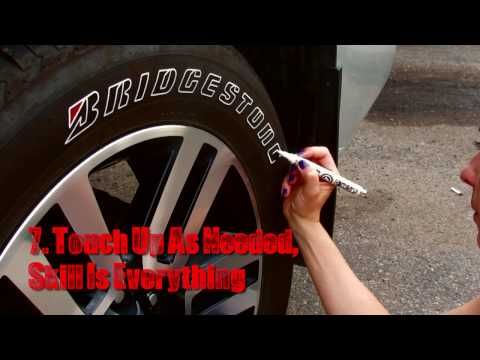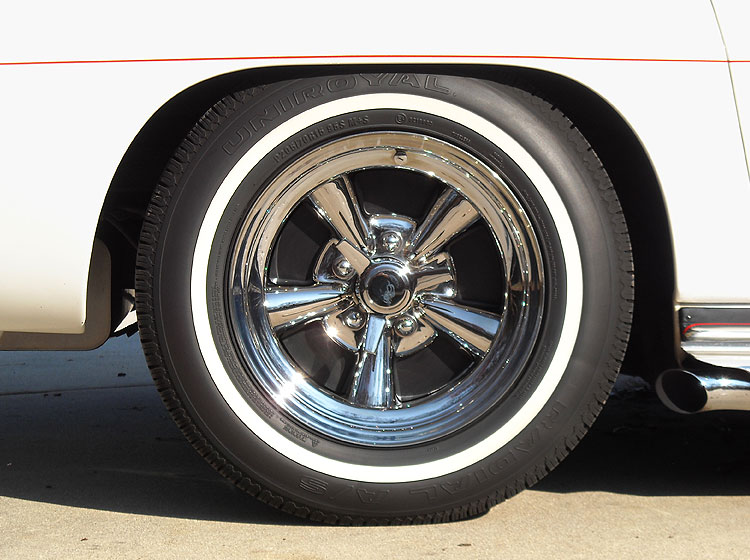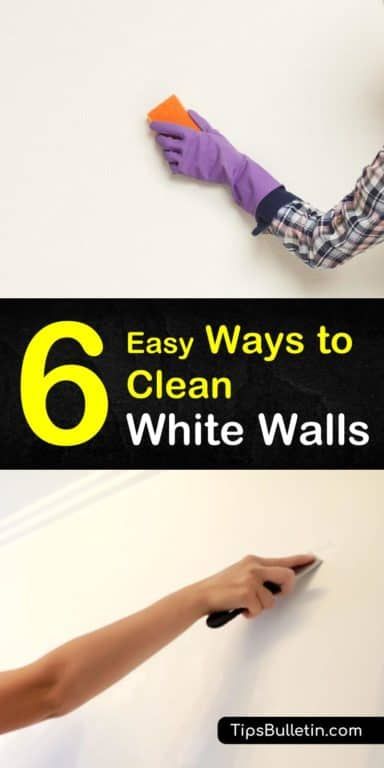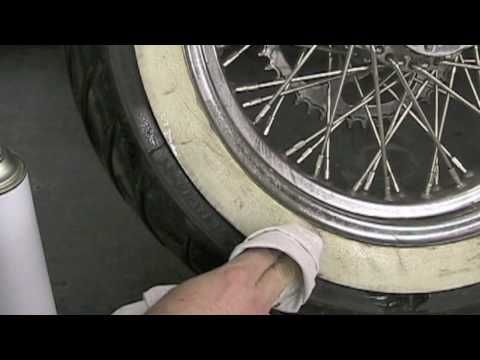Once considered the epitome of automobile fashion and luxury, whitewall tires provide a classic finish to vehicles that is reminiscent of era’s past. And although you can’t get whitewalls as an added accessory from the factory anymore these days, the style has remained a staple in certain car culture circles like hot rods, VW’s and classics.
If you’ve ever owned a car with a set of whitewall tires, you know they’re definitely more work to keep clean than the standard black wall tires used today. Jay’s got a few cars in his collection that sport the whitewall look, and we’re always working to keep them looking their best.
In today’s blog post, we’ll cover some of the basic care tips we use at Jay’s garage, and hopefully they'll help you keep your whitewall tires looking their whitest.
But first, a little history on whitewall tires. What are they and how did they even come to exist?
To start, rubber tires were originally entirely white in color. Rubber in its natural form does not age or wear well. Because of this fact, tire manufacturers began blending specific materials with the natural rubber to achieve different characteristics. One of those materials was zinc oxide. The zinc oxide helped with traction of the finished tire, but it was also a contributing factor that caused the tire to be completely white, tread included. By today’s standards, an all-white tire might look funny, but in their day they were the height of luxury. See the picture below:
Black tires didn’t emerge until manufacturers began blending carbon black into their rubber as a reinforcing filler. The carbon black increased the strength & durability of the rubber, but more importantly, it helped conduct heat away from specific areas of the tire. In an attempt to increase the lifespan as well as limit the amount of thermal damage endured by the tires, manufacturers began blending carbon black into the rubber and using it as the treaded surface of the tire, while leaving the side walls white. In the early 1900’s, you could buy tires with black tread and a white sidewall. This signaled that you had the best set of tires money could buy, and thus the trend was born. By the 1930’s, you could get whitewall tires on just about any car made, and customers flocked to the fashion statement.
In the early 1900’s, you could buy tires with black tread and a white sidewall. This signaled that you had the best set of tires money could buy, and thus the trend was born. By the 1930’s, you could get whitewall tires on just about any car made, and customers flocked to the fashion statement.
The biggest downside to installing a set of whitewalls on your car is simply keeping them clean. They scuff easily, show even the slightest amount of dirt, and god forbid you accidentally run up onto a curb (who remembers curb feelers?). And even if you don’t drive the car, the whitewalls want to turn yellow and brown just from being exposed to the elements. Needless to say, they’re a little high maintenance, especially when compared to their black wall counterparts. Here’s some of the tips & tricks we use to keep Jay’s whitewalls looking their best year-round.
 You want to steer clear of any harsh household cleaning products, or products that may contain alcohol or chlorine bleach. These may work in the short term, but they will also dry out the surface of the tire and cause premature wear.
You want to steer clear of any harsh household cleaning products, or products that may contain alcohol or chlorine bleach. These may work in the short term, but they will also dry out the surface of the tire and cause premature wear.Pro tip: for really stubborn yellow or brown staining, you can also use a scrub pad, or even sand paper to slowly and gently remove the yellowed layer until the white layer below shows through.
Frequent and routine cleaning will help keep your whitewalls looking their best. You can also use a quality tire dressing to help combat the harmful effects of the sun. Our Tire & Trim Care leaves behind a nice satin sheen, while shielding against harmful UV rays. It’s our go-to dressing when caring for Jay’s collection.
Hopefully these tips will help you the next time you're faced with the task of cleaning whitewall tires. If you have any questions or suggestions, leave them in the comments below. If you'd like to see us cover other popular detailing topics, drop us a line at [email protected].
Chris Walters
Older Post
Newer Post
Whitewall tires, as their name hints, have a white sidewall. Some varieties have a slim white line going around the tire’s circumference. They were popular in the 1950s and are making a comeback. You may sport them in restored classics and sports cars. You need to know how to clean whitewall tires if you own a set.
Some varieties have a slim white line going around the tire’s circumference. They were popular in the 1950s and are making a comeback. You may sport them in restored classics and sports cars. You need to know how to clean whitewall tires if you own a set.
Cleaning is a critical part of tire maintenance, which, unfortunately, many car owners overlook. Standard black tires can hide much of the dirt. Whitewall tires turning brown or black are a sign that you need to bring out your cleaning utilities.
Stick on with us as we show you how to clean this tire type.
Before going onto the cleaning process, you need to know what makes your white sidewall tires dirty. There is the apparent soiling coming from mud, dust, and other agents on the roadside.
The other cause of a dirty sidewall is the effect of ultraviolet rays. Exposure to these rays will give the white part a yellowish hue. In severe situations, you may notice some minor cracks.
Now to the cleaning part, listed below are some of the things you need.
If you have all these items, use the following steps to restore your tires.
Start by cleaning the tires as you would typically. Wet the tires and apply a generous amount of detergent on them. Scrub the rubber surface with a cleaning brush or SOS pads, then focus on the rims. Make sure you get rid of all dirt, including grime and oil customarily found on the rims.
Your choice of detergent should be devoid of alcohol and chlorine. While these two elements do an excellent job of cleaning, they can dry out the rubber surface. This hastens the tires’ degradation rate.
Once done with cleaning, rinse the tires and let them dry.
After drying, you now shift your attention to the white strip. Here, we look at how to clean whitewall tires that are yellow due to the effect of UV rays. To deal with a yellowing sidewall, you can go for dedicated whitewall tire cleaners. The downside is that they may be pretty costly.
Here, we look at how to clean whitewall tires that are yellow due to the effect of UV rays. To deal with a yellowing sidewall, you can go for dedicated whitewall tire cleaners. The downside is that they may be pretty costly.
A solution comes in the form of household items. Vinegar and baking soda will perform impeccably in restoring the white color to your tires. Make a paste of the two products and apply it generously around the white surface for all the tires.
Let it rest for a while before gently scrubbing it off with an SOS pad or brush. Rinse it with clean water, and you notice the change.
The other way of doing away with yellowed whitewall tires is by using eraser cleaning pads. You wet the pad and the tires and gently scrub the tire surface. For the best results, use at least one pad for each tire.
Optionally, cleaning whitewall tires with a magic eraser is also ideal in the restoration of your tires. This item will do away with grime and oil, which are stubborn stains.
After seeing that the tires are in proper shape, apply a tire protectant over it. This product gives the tire a shiny look and an edge of protection against UV rays.
When cleaning white sidewall tires, there are several things to keep in mind for a smooth process. First of all, start by cleaning the tires before going to the rest of the vehicle. It prevents dirt from the tires from going to already cleaned surfaces.
Rinse both parts together, and apply the tire dressing when waxing the rest of the car. Additionally, check for any form of tire wear patterns and damage to arrange for necessary repairs if necessary. The highlighted steps also come in handy when looking at how to clean whitewall tires on a motorcycle.
You can check out this video for guidance on how to clean whitewall tires.
A clean white sidewall tire looks fantastic and can improve its life. Maintaining this tire type is straightforward, requiring regular detergent and a brush. However, for a satisfactory outcome, you can use cleaners dedicated to whitewall tires, which will make the white area shine. Also, you have the choice of using vinegar and baking soda to do away with yellowing.
Maintaining this tire type is straightforward, requiring regular detergent and a brush. However, for a satisfactory outcome, you can use cleaners dedicated to whitewall tires, which will make the white area shine. Also, you have the choice of using vinegar and baking soda to do away with yellowing.
A problem that you are likely to encounter with whitewalls is yellowing or browning. Basic cleaning can rejuvenate the tire to its original color, though at times, it may fail. In this case, you can rely on whitewall tire cleaners that will get rid of the discoloration. The other solution is to apply a baking soda-vinegar paste on the sidewall. This mixture of household items will have your sidewalls white as they were initially.
There are several products to use to clean whitewalls. Can you use bleach on whitewall tires? While bleach does well in cleaning the tires, its chlorine component can act against your efforts. It is advisable to avoid chlorine and alcohol-based cleansers, as they can dry the rubber surface, leading to their degradation. In short, steer away from bleach when cleaning your white sidewalls.
It is advisable to avoid chlorine and alcohol-based cleansers, as they can dry the rubber surface, leading to their degradation. In short, steer away from bleach when cleaning your white sidewalls.
A yellow whitewall tire looks unsightly, and it may be challenging to deal with. The good news is that there is a solution in the form of whitewall cleaners. They have components that will remove the yellow appearance.
Moreover, you can create vinegar and baking soda paste. It has reduction properties that will do away with the yellow oxidized tire surface.
There are many possible culprits behind your sidewalls turning yellow. The common one is the effect of UV rays, which cause their oxidation. Fluid spills, like those from oil and transmission fluid, can bring about this issue. At times, driving over plants can release their sap onto the surface. The sap may have chemical properties that cause oxidation.
A tire dressing or protectant will protect the sidewalls from turning yellow.
Simple Green markets its products as green and biodegradable. Its products, such as the multipurpose cleaner, are safe for your vehicle and will do a great job for your tires. The cleaner does not have chlorine or alcohol, meaning the rubber surface will be in good shape after use.
Whitewall tires are suitable for your vehicle’s aesthetic factor, giving them a sporty or classic look. The problem with this type of tire comes when you want to clean them. You have to bring all you can to have it in proper shape.
For your convenience, we show you how to clean whitewall tires and rejuvenate them. Follow the highlighted instruction for good-looking tires.
Learn More:
Category: Operation and maintenance Technical information
Article reading time: 3 minutes
Save to bookmarks
The right technology and the right detergents will help get rid of brake dust and gravel stuck in the tread, improving the safety of the car, driver and passengers. nine0003
nine0003
How to wash tires we will tell in this article.
To clean the wheels from dirt, dust and oil residues, you will have to act according to the following plan:
 The wheel should not be treated with the same napkin as the car body. Traces of solvent or oil will stain the cleaned rubber. nine0018
The wheel should not be treated with the same napkin as the car body. Traces of solvent or oil will stain the cleaned rubber. nine0018 In the final, the wheel is applied with a protector that protects the tires from the harmful effects of ultraviolet radiation.
To clean dried-on dirt from rims and wheels, you will need a machine that generates high-pressure water. Such installations are produced by American and European companies, so they are quite expensive, but they can be replaced with an ordinary hose and a special nozzle that accelerates the water jet to a pressure sufficient to clean the car. nine0003
To remove residual dirt, you will need a medium-hard bristle brush and a cleaning solution that is used to treat wheels and rims. This solution can be prepared from household chemicals found in the kitchen or bathroom, or bought at an automotive store. Moreover, store products are divided into universal foam cleaners and solutions based on weak acids, which can only process car rims. By the way, if you don’t know how to wipe rubber off a car, try this solution. nine0003
By the way, if you don’t know how to wipe rubber off a car, try this solution. nine0003
To wash the wheels of cleaning products, you need the same high-pressure apparatus or a hose with a nozzle. But as a napkin that will wipe off the remaining water, you need to use only clean microfiber from the package.
Winter Drive protection
nine0002 Tires Goodyear UltraGrip Arctic 2 SUVWinter Drive Protection Sound Comfort
Rating:
4.5
Tires Goodyear UltraGrip Ice 2
Tires Goodyear UltraGrip Performance+ SUV
Tires Goodyear UltraGrip Arctic 2
Winter Drive Protection Run On Flat Sound Comfort
Tires Goodyear UltraGrip Performance+
To prepare a solution that can clean dirt from tires, dilute in a small amount of water to half a standard bottle of dishwashing detergent. Pour the resulting concentrate into a container into which it is convenient to dip a car brush. Thanks to the abundance of surfactants found in dish detergent, a homemade solution will clean tires as well as a factory cleaner. nine0003
Pour the resulting concentrate into a container into which it is convenient to dip a car brush. Thanks to the abundance of surfactants found in dish detergent, a homemade solution will clean tires as well as a factory cleaner. nine0003
Rules for the use of home remedies that can clean wheels are similar to the recommendations of manufacturers of commercial drugs. Before treating tires and rims with home remedies, make sure you wash the tires. Otherwise, brake dust and gravel residues will turn into abrasive particles that can scratch the tread when you scrub it off dirt with a brush or sponge. Do not try to clean the wheel with an old cloth that has been used to clean the engine compartment or bodywork - it will stain the wheel with oil or gasoline. nine0003
Article author: The Goodyear team
Related articles
Tire regrooving
(
Updated:
05/12/2022
)
nine0002 Which tires are better: narrow or wide?
(
Updated:
05/12/2022
)
How are tires tested?
( nine0003
Updated:
05/12/2022
)
How and why to blacken rubber?
(
Updated:
05/12/2022
) nine0003
Does the braking distance depend on the tires?
(
Updated:
05/12/2022
)
Proper break-in of studded tires
(
Updated:
05/12/2022
)
Yellow and red marks on the tires.
Meaning:
1. Multi-colored dots, triangles, which are applied to the sidewalls of car tires?
2. Colored stripes on their tread?
The answer to this curious question is quite simple. Circles (dots, triangles) of red, yellow (there are also blue or even white designations) are nothing more than balancing marks and they are intended to ensure the most accurate balancing of an automobile wheel.
1. Yellow dot or yellow triangle. nine0238
This yellow dot (or yellow triangle), which is applied to the sidewall of a car tire - is the lightest part of the tire , which is determined by the static balancing method.
If the rim has a distinguishable marking "L" - this is the lightest place on the rim, then during installation it is necessary to place the lightest place on the rim ("L") on the opposite side from of a light spot on a car tire , that is, a yellow dot.
Note:
1. "L" is the lightest spot on the rim.
2. On rims of different manufacturing companies, the "L" point can be indicated by different colored dots: green, blue, as well as other colors.
If there is no distinguishable “L” marking or colored dots on the rim, then in this case, during installation, it is necessary to combine the heaviest place on the rim, and this will be the place where the inflation valve is located with the lightest place on the car tire, then there is a yellow dot. nine0238
2. Red dot or red triangle.
This designation indicates the maximum point of deflection of the radial force (RFV), and thus is the most rigid and therefore heaviest part of the sidewall of an automobile tire. This point, when mounting the wheel, must necessarily be aligned with the “L” mark - this is the lightest place on the rim
The red dot (triangle) is usually applied to car tires that are supplied in the original (primary) vehicle configuration. Its purpose is the greatest power inhomogeneity. In other words, this is a kind of heterogeneity, the occurrence of which can be closely related to various kinds of compounds of various layers of a car tire (belt layers, carcass layer, and so on). nine0030 The rims that are supplied in the primary, original vehicle configuration are also marked with the minimum distance from the center of the rim to the rim (a white dot or another mark is applied). During the assembly of the car wheel at the car factory, the red dot of the tire is aligned with this mark on the wheel rim. This is done in order to reduce the maximum power inhomogeneity, to ensure a balanced power characteristic of the wheel assembly. nine0003
Its purpose is the greatest power inhomogeneity. In other words, this is a kind of heterogeneity, the occurrence of which can be closely related to various kinds of compounds of various layers of a car tire (belt layers, carcass layer, and so on). nine0030 The rims that are supplied in the primary, original vehicle configuration are also marked with the minimum distance from the center of the rim to the rim (a white dot or another mark is applied). During the assembly of the car wheel at the car factory, the red dot of the tire is aligned with this mark on the wheel rim. This is done in order to reduce the maximum power inhomogeneity, to ensure a balanced power characteristic of the wheel assembly. nine0003
During the normal installation of the wheel, experts are advised to ignore the presence of the red dot, and be guided only by the yellow dot while aligning it with the inflation valve.
3. White dot or white circle.
In the case of some OE car tires, this color coding tells us the point of minimum radial force deflection (RFV), which is the most flexible part of the car tire's sidewall wall. In this case, the white dot or circle must be aligned 180° from the 'L' mark, or the 'top' mark on the wheel. nine0003
In this case, the white dot or circle must be aligned 180° from the 'L' mark, or the 'top' mark on the wheel. nine0003
4. Colorful lines.
Multi-colored lines that are printed on the tread of car tires are necessary to distinguish these tires that are in a stack, for example, in a store or in a warehouse.
Each tire size has its own unique color, arrangement and thickness of these colored stripes. The stripes can sometimes vary depending on the state of the manufacturing company, the specification and release date of car tires, and even on tires that have the same tread pattern and size. nine0030 According to foreign experts: colored lines serve as an indicator on the tire, which shows that this tire has been run-in.
5. White stamp with a number on a car tire.
A white stamp with a number on a car tire indicates the number of the inspector who carried out the final inspection of the car tire at the factory.